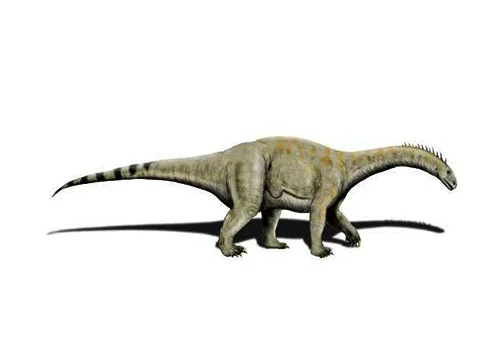Vulcanodon (Volcano tooth)

Vul-can-o-don
Michael Raath - 1972
Herbivore
Estimated 10 meters long
Sauropod
V. karibaensis (type)
Zimbabwe, Lake Kariba, Island 126/127 - Vulcanodon Beds Formation
Early Jurassic, 201-189 million years ago
Vulcanodon Facts
Vulcanodon is a genus of sauropod dinosaur that lived in the Early Jurassic period, around 201-189 million years ago, in what is now southern Africa. Its name means “volcano tooth” in reference to the location where the first fossils were discovered.
Vulcanodon was a large and heavy-bodied dinosaur, measuring up to 10 meters (33 feet) in length and weighing around 6-7 tons. It had a long neck and tail, a small head with peg-like teeth, and a relatively short and sturdy build compared to other sauropods. Like other sauropods, it was a quadrupedal herbivore that likely fed on low-lying vegetation.
Vulcanodon is an important dinosaur for understanding the early evolution of sauropods. It was one of the earliest and most basal members of the group, and its anatomy shows a number of primitive features that are absent in more derived sauropods. For example, it had relatively short neck vertebrae with less-developed air sacs, suggesting that it may not have been able to lift its head as high as later sauropods.
Despite its importance, Vulcanodon is known from only a few incomplete fossils, so much of what we know about the dinosaur is based on educated guesses and comparisons with other early sauropods. Nonetheless, it remains a fascinating and important dinosaur for understanding the early evolution of this group of giant herbivores.



